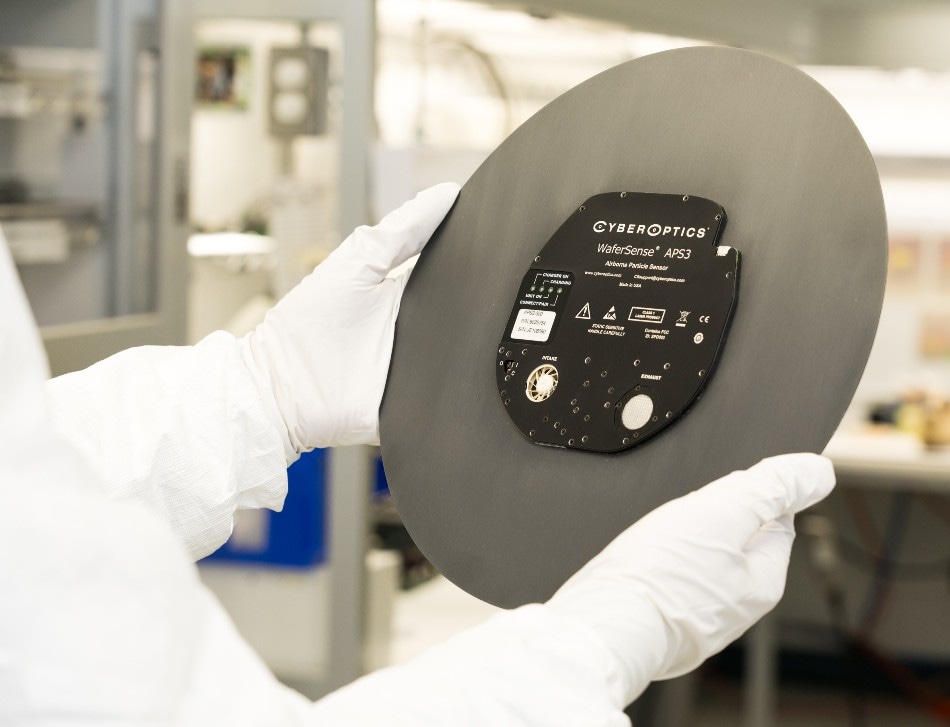CyberOptics® Corporation, a leading global developer and manufacturer of high precision 3D sensing technology solutions, announces that it will exhibit at SEMICON Europa, scheduled to take place Nov. 13-16, 2018 at the Messe Munchen in Munich, Germany. The company will demonstrate its next-generation Airborne Particle Sensor™ technology (APS3) 300mm with new ParticleSpectrum™ software in Hall A4, booth 101.
 CyberOptics’ WaferSense® APS3 speeds up equipment
CyberOptics’ WaferSense® APS3 speeds up equipment
CyberOptics’ WaferSense® APS3 speeds up equipment set-up and long-term yields in semiconductor fabs by wirelessly detecting, identifying and monitoring airborne particles. Now in a thinner and lighter form factor to travel through semiconductor tools with ease, the APS3 offers leading accuracy and sensitivity valued by equipment and process engineers.
“Semiconductor Fabs worldwide have been utilizing our Airborne Particle Sensor technology for many years,” said Dr. Subodh Kulkarni, President and CEO, CyberOptics. “Now in its third generation, we will continue to deliver significant benefits in terms of yield, productivity and throughput.”
The APS3 solution incorporates ParticleSpectrum software – a completely new, touch-enabled interface with user-friendly functionality, making it simple to read, record and review small to large airborne particle data and see the effects of cleanings, adjustments and repairs in real-time.
At SEMICON Europa, CyberOptics also will demonstrate the proprietary 3D Ultra High-Resolution Multi-Reflection Suppression (MRS) Sensor technology that meticulously identifies and rejects reflections caused by shiny components and surfaces. Effective suppression of multiple reflections is critical for highly accurate measurements. Offering an unmatched combination of accuracy and speed, MRS sensors are widely used for inspection and measurement in the SMT, metrology and in semiconductor markets. This best-in-class, ultra high-resolution technology used in back-end inspection applications, is ideally suited for IC package, wafer bump inspection and mid-end semiconductor applications where the highest degree of precision is required.